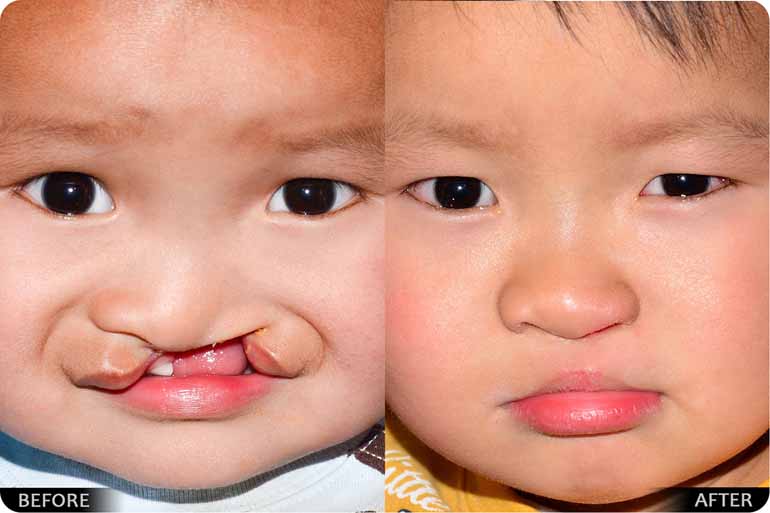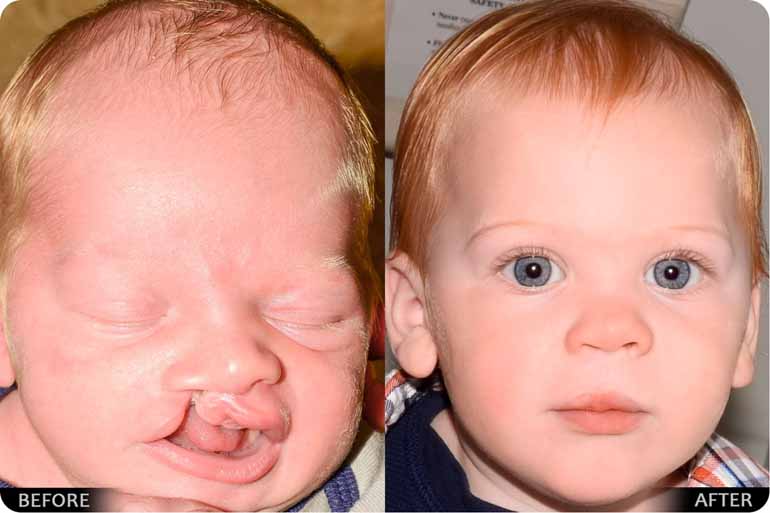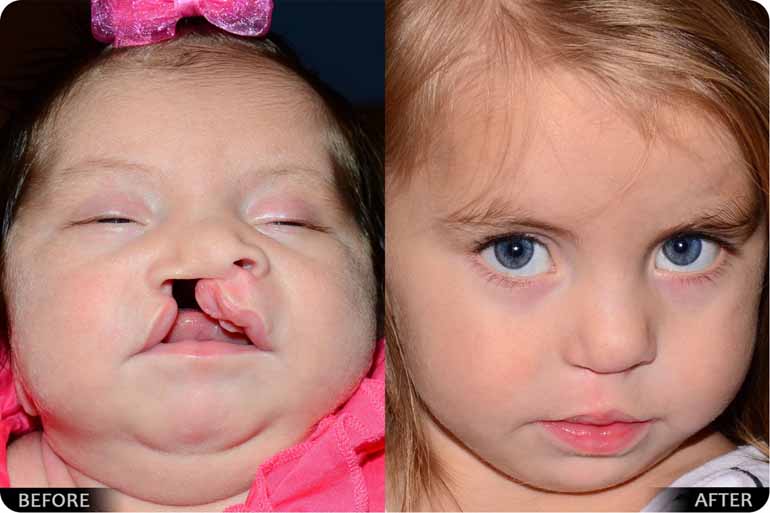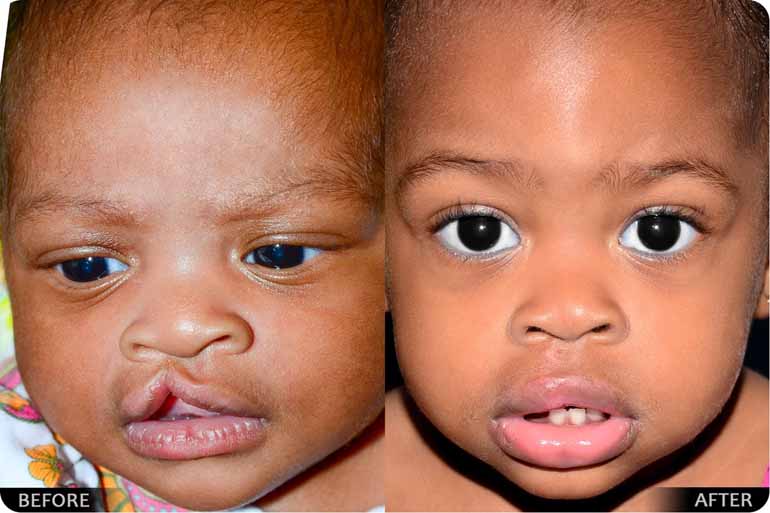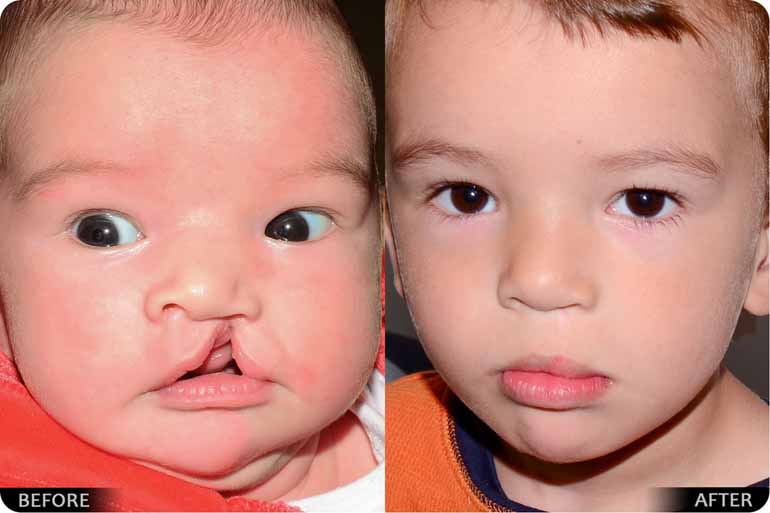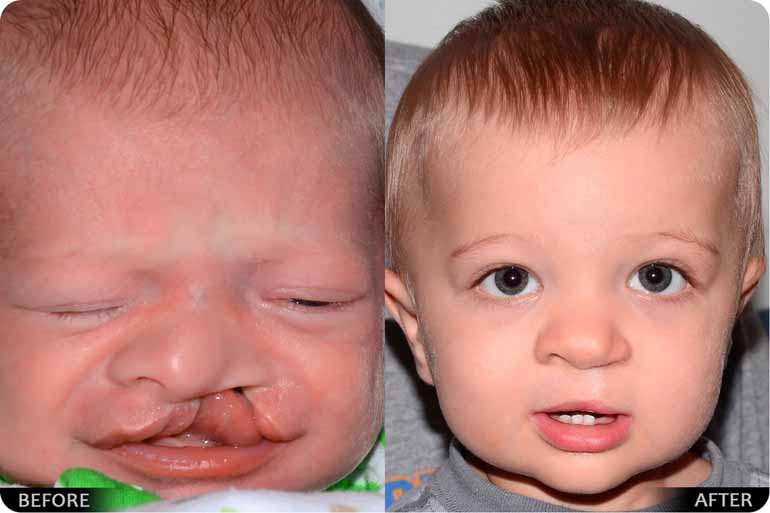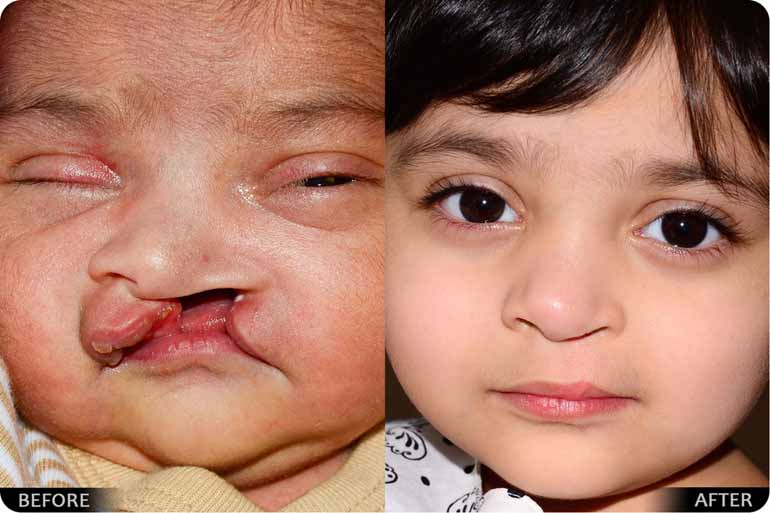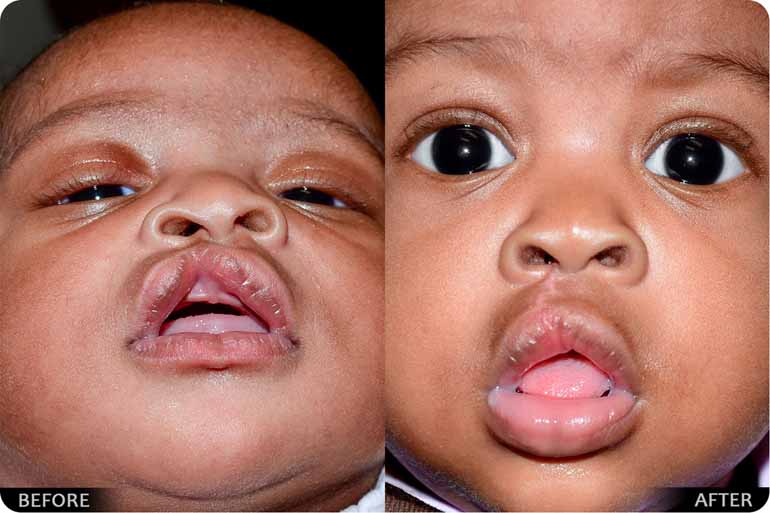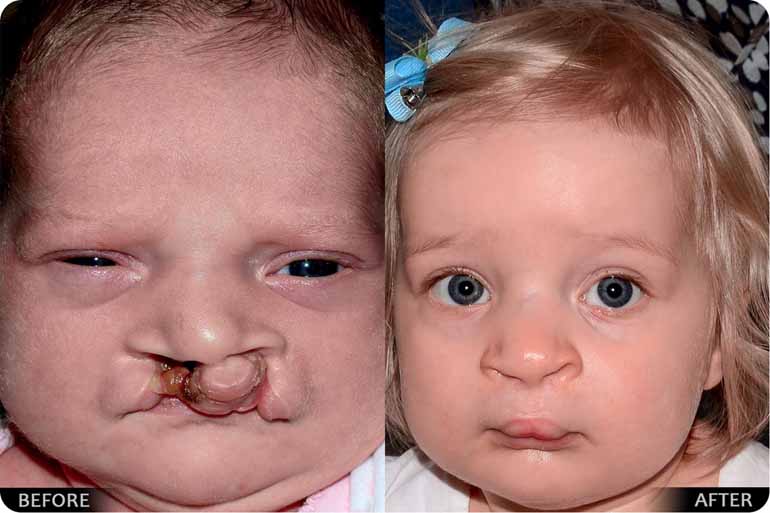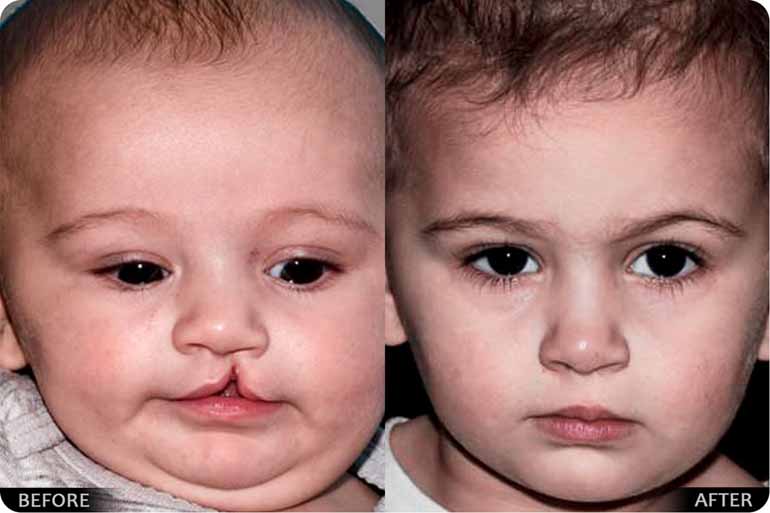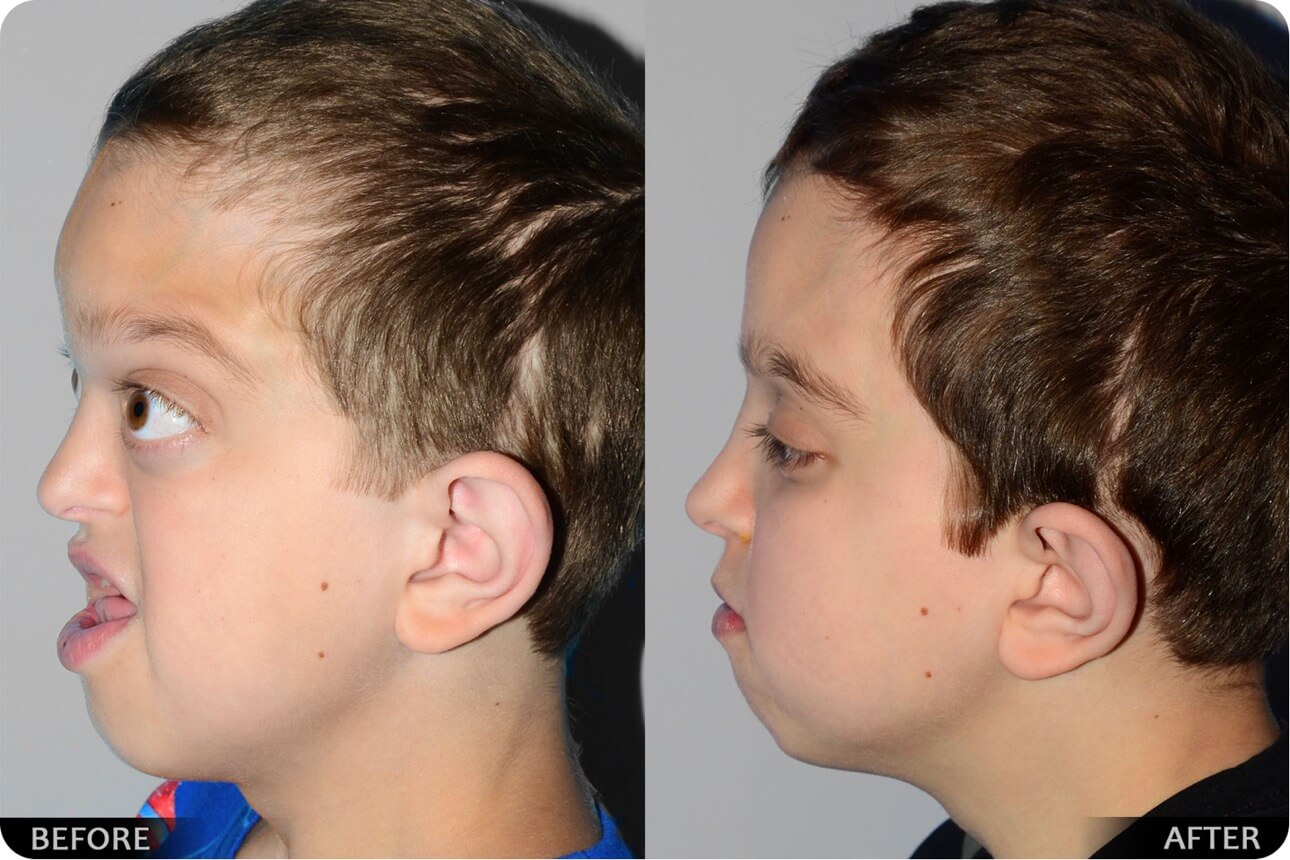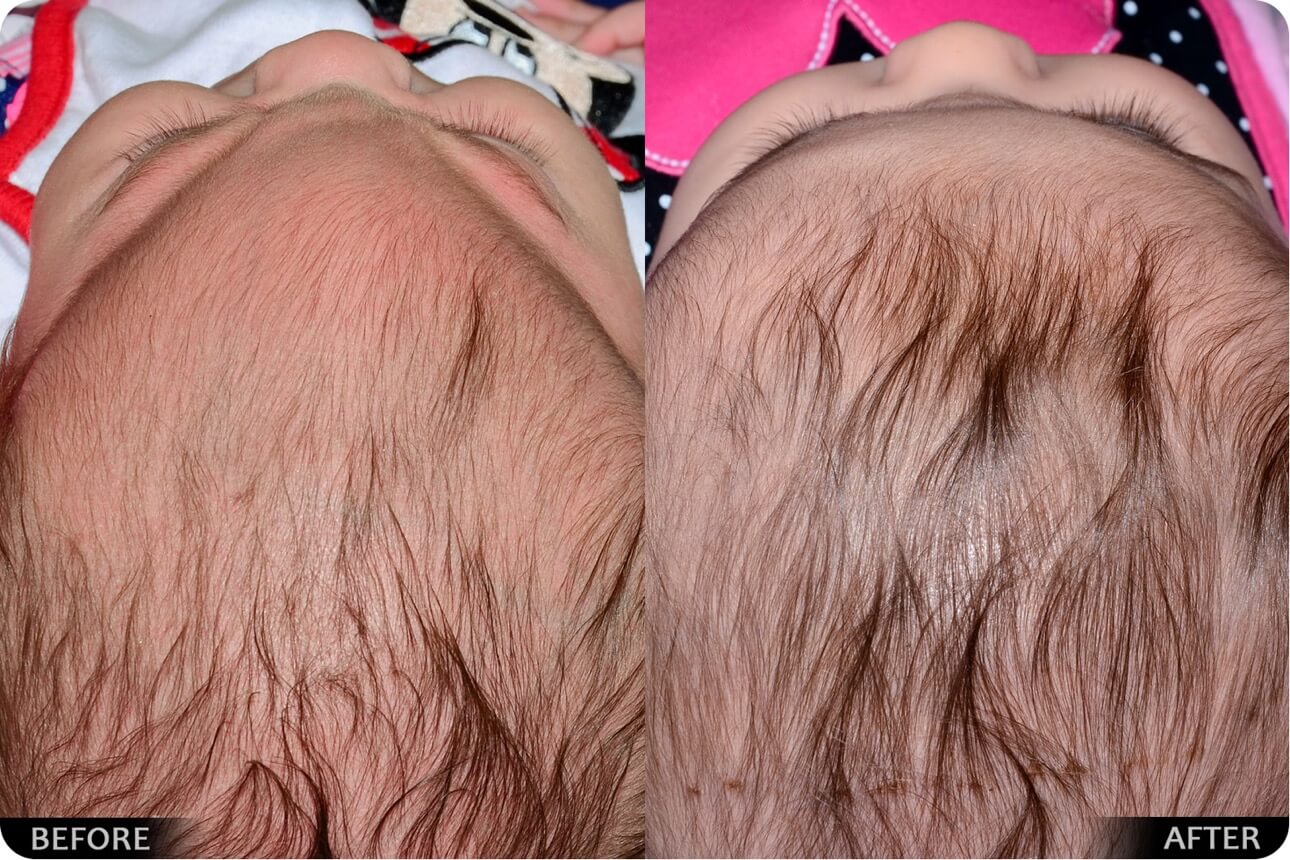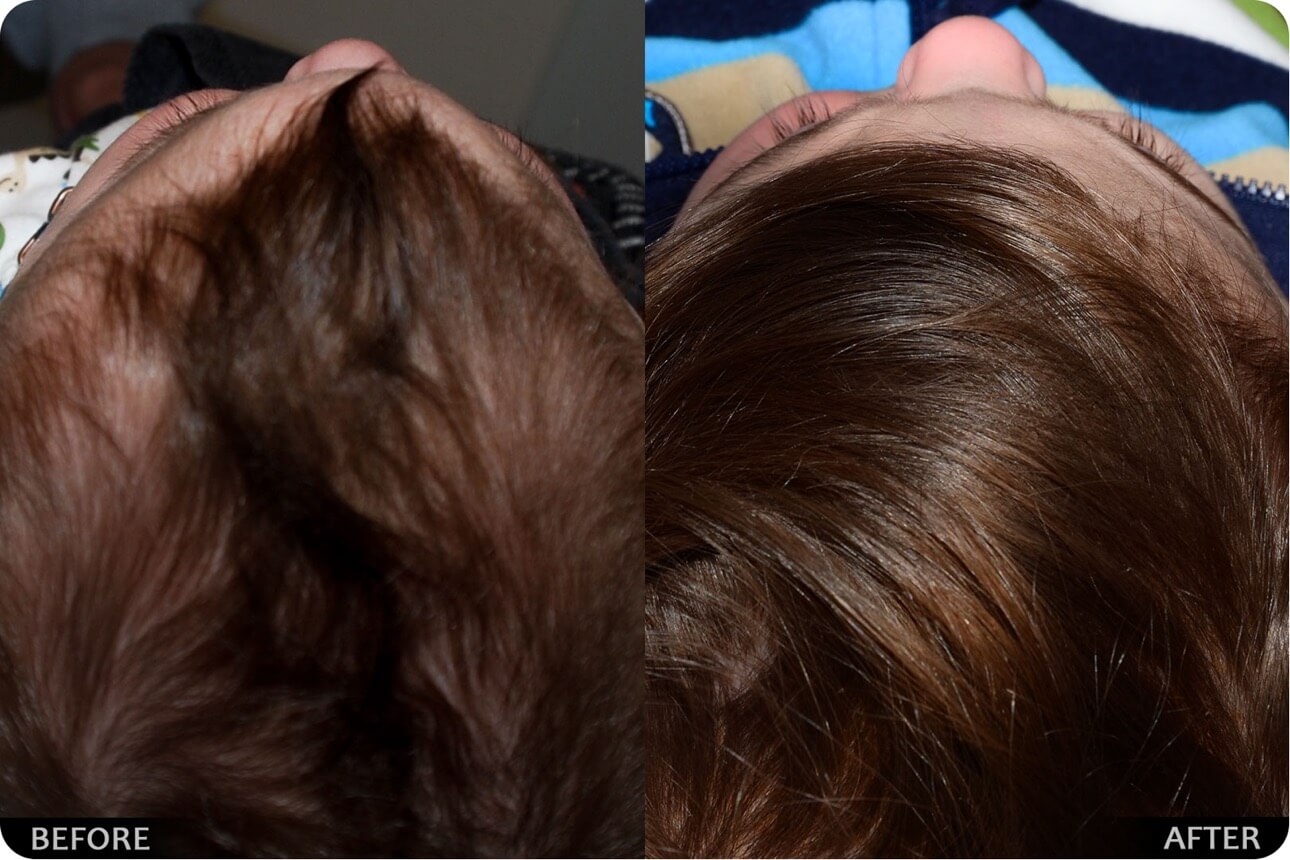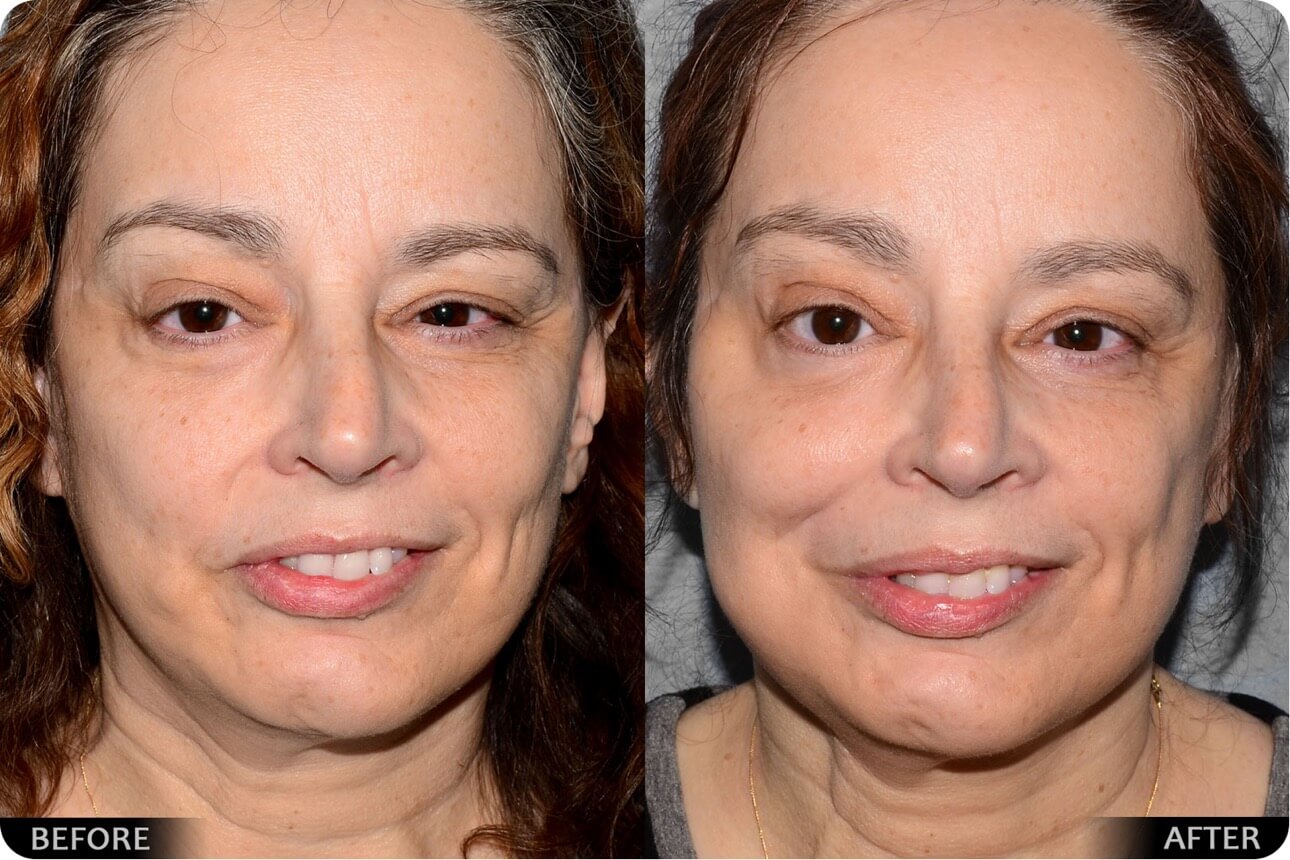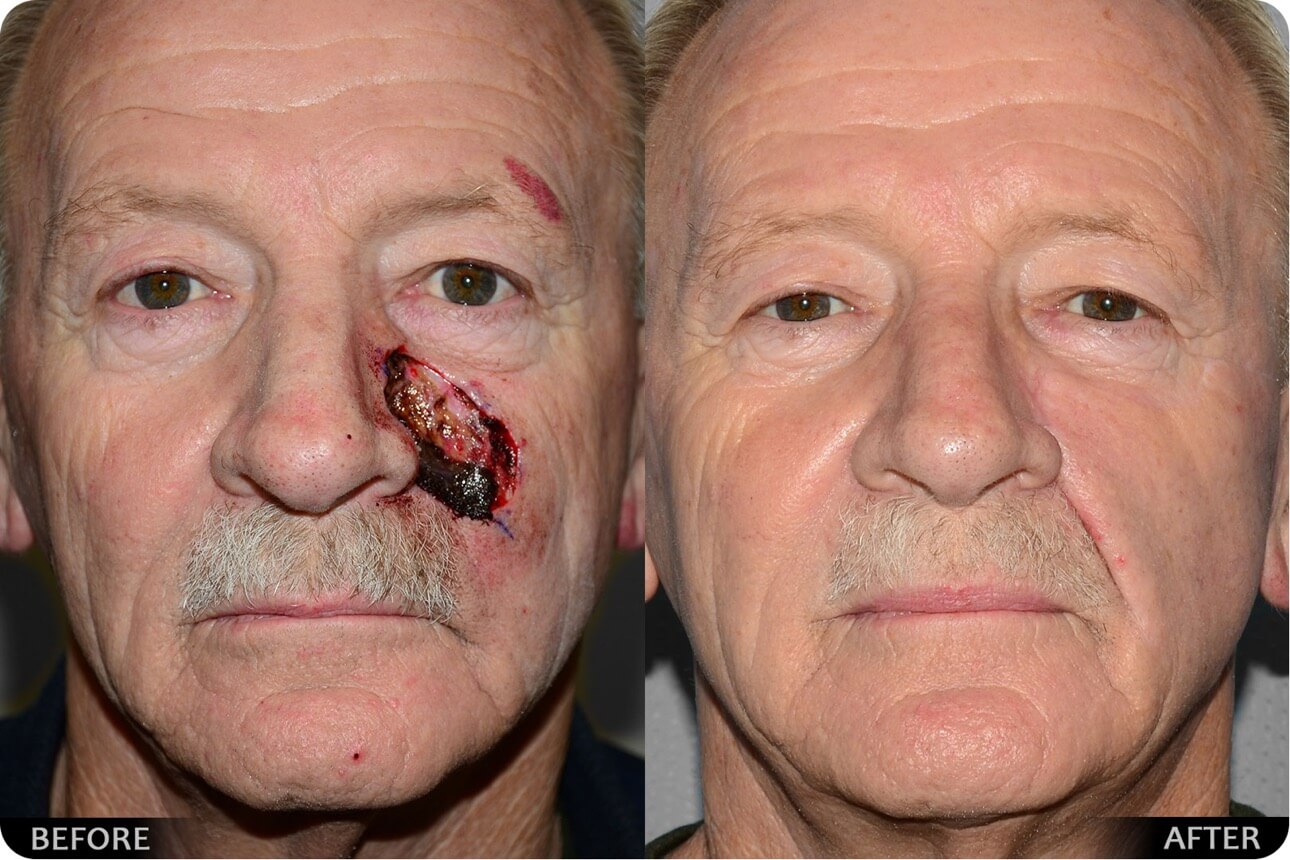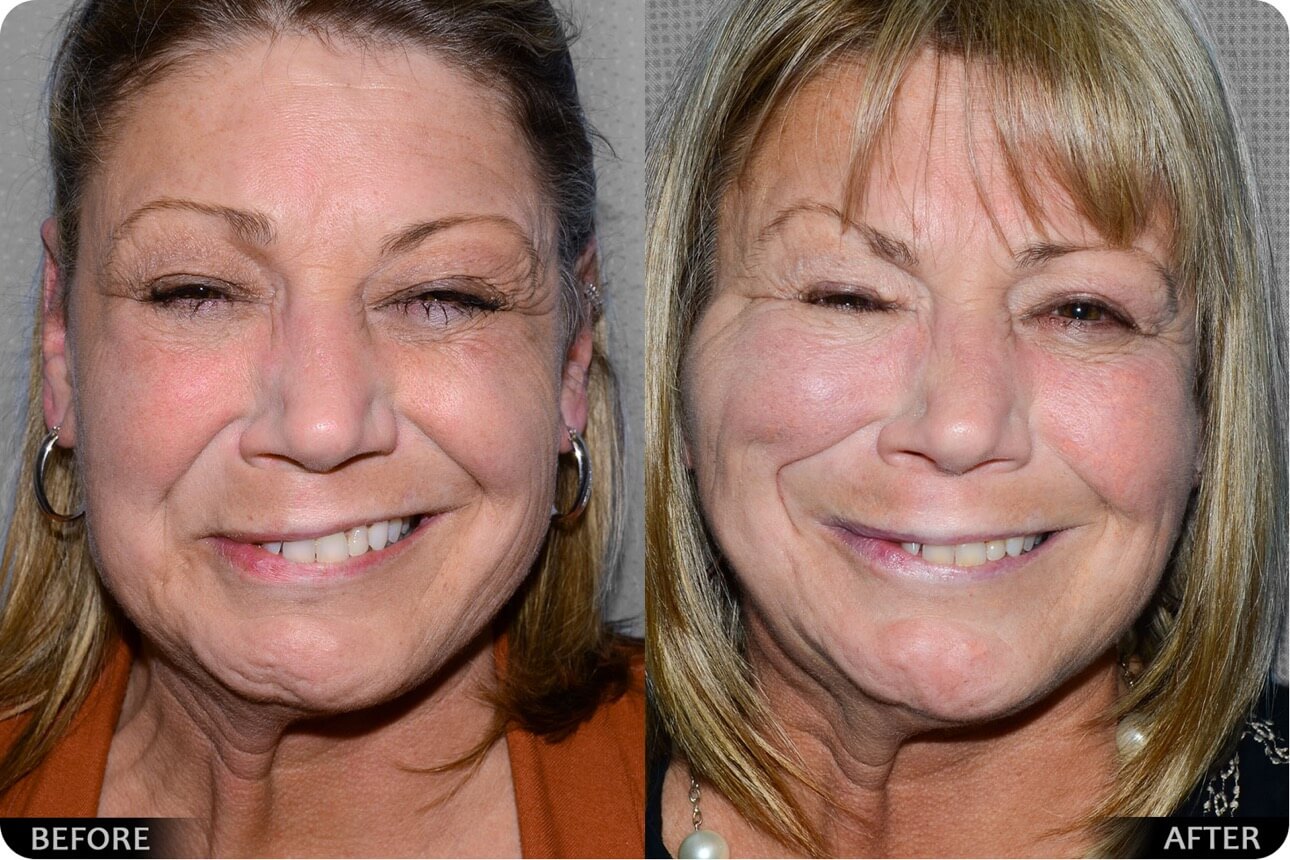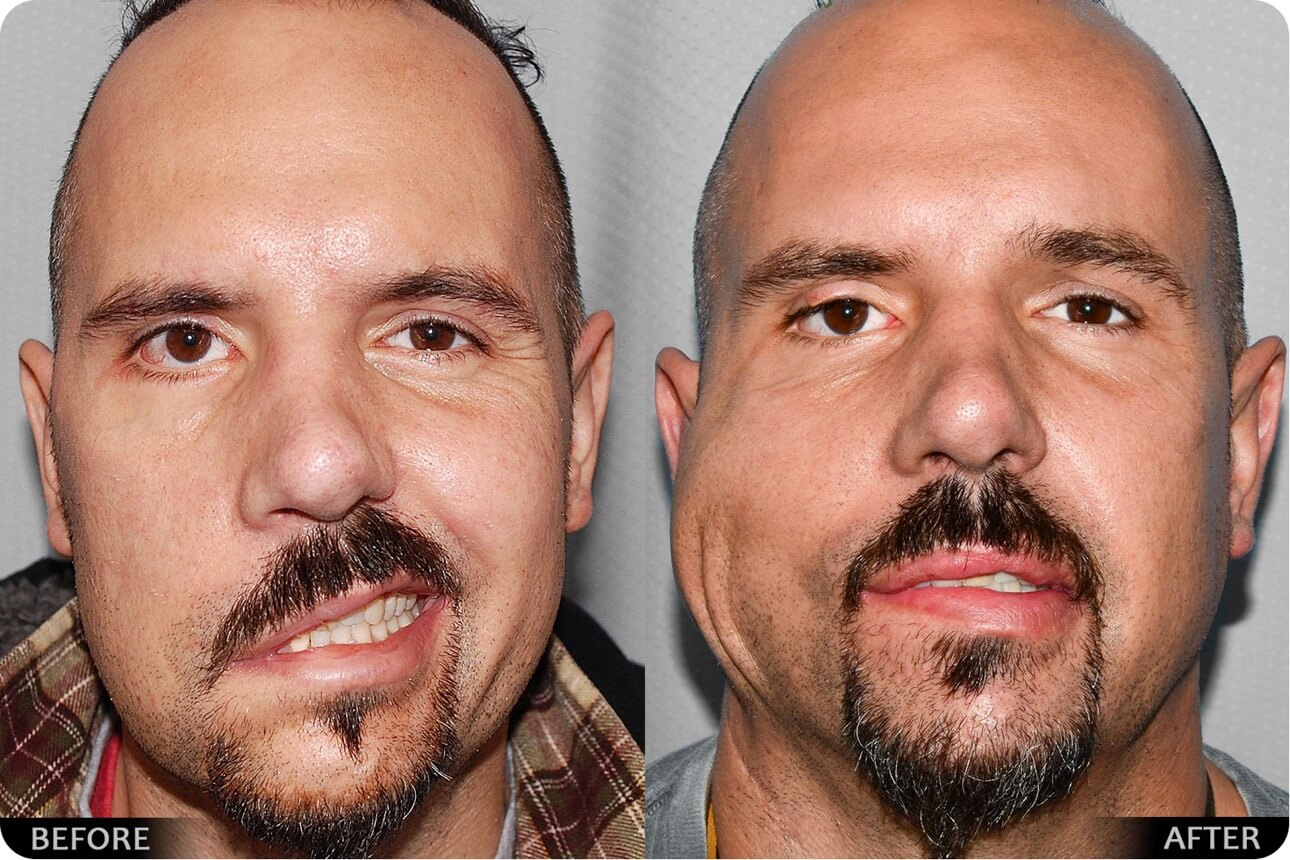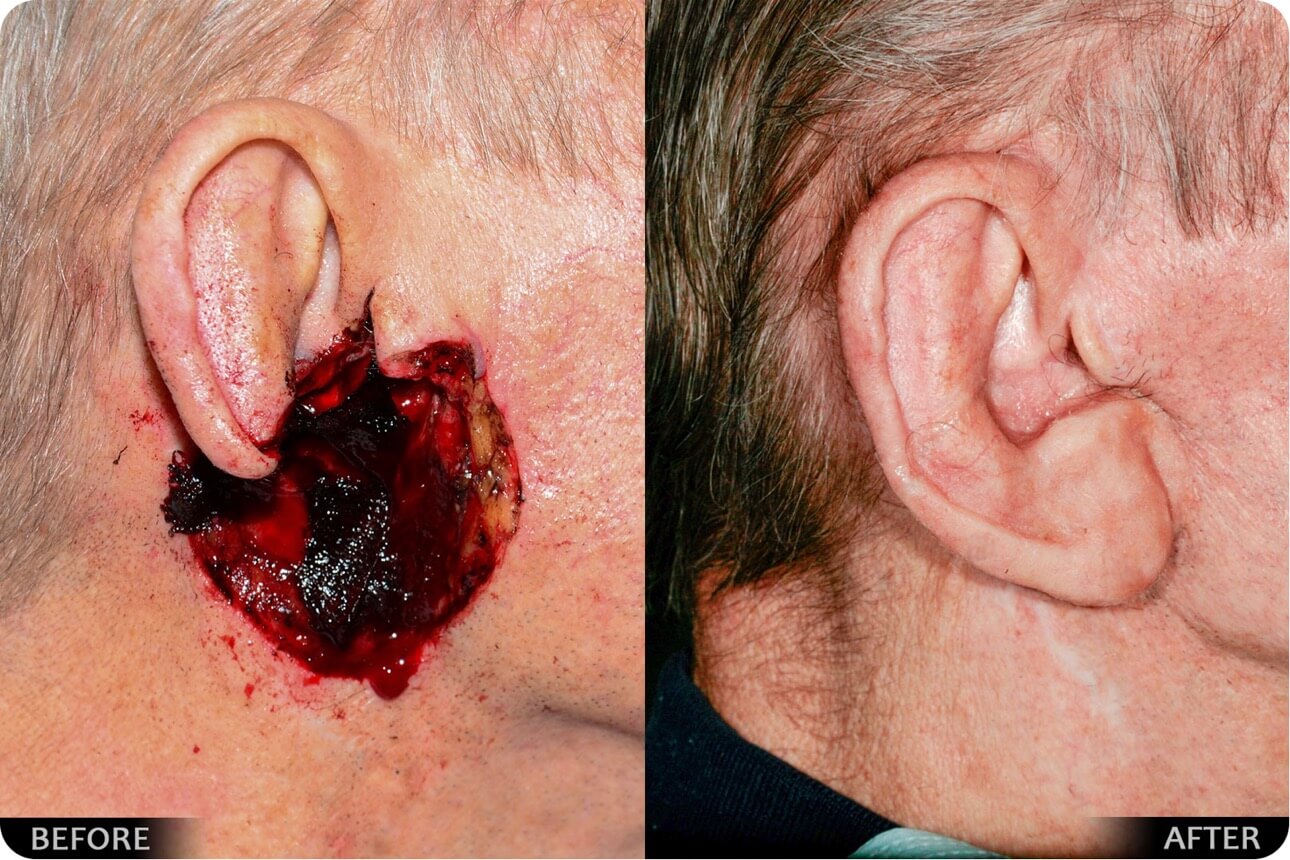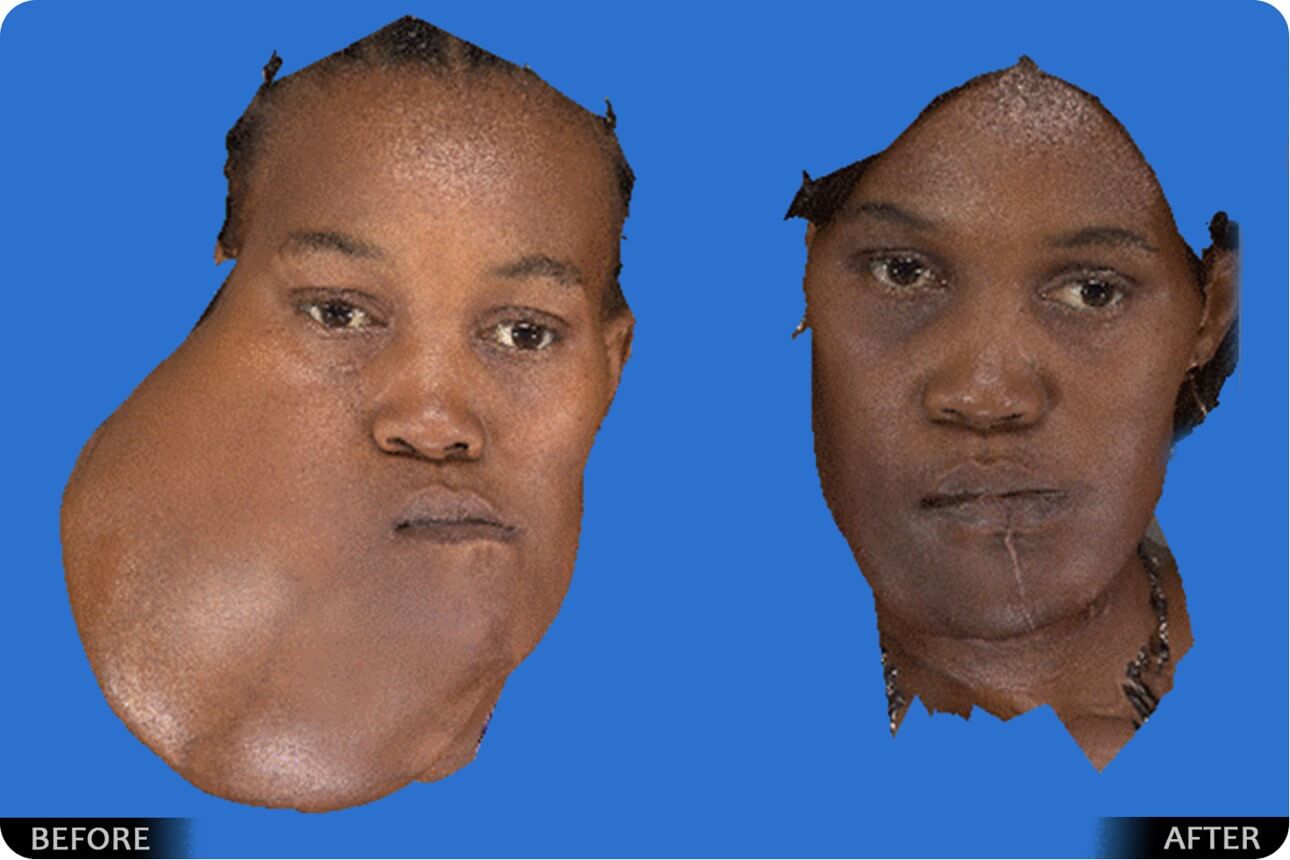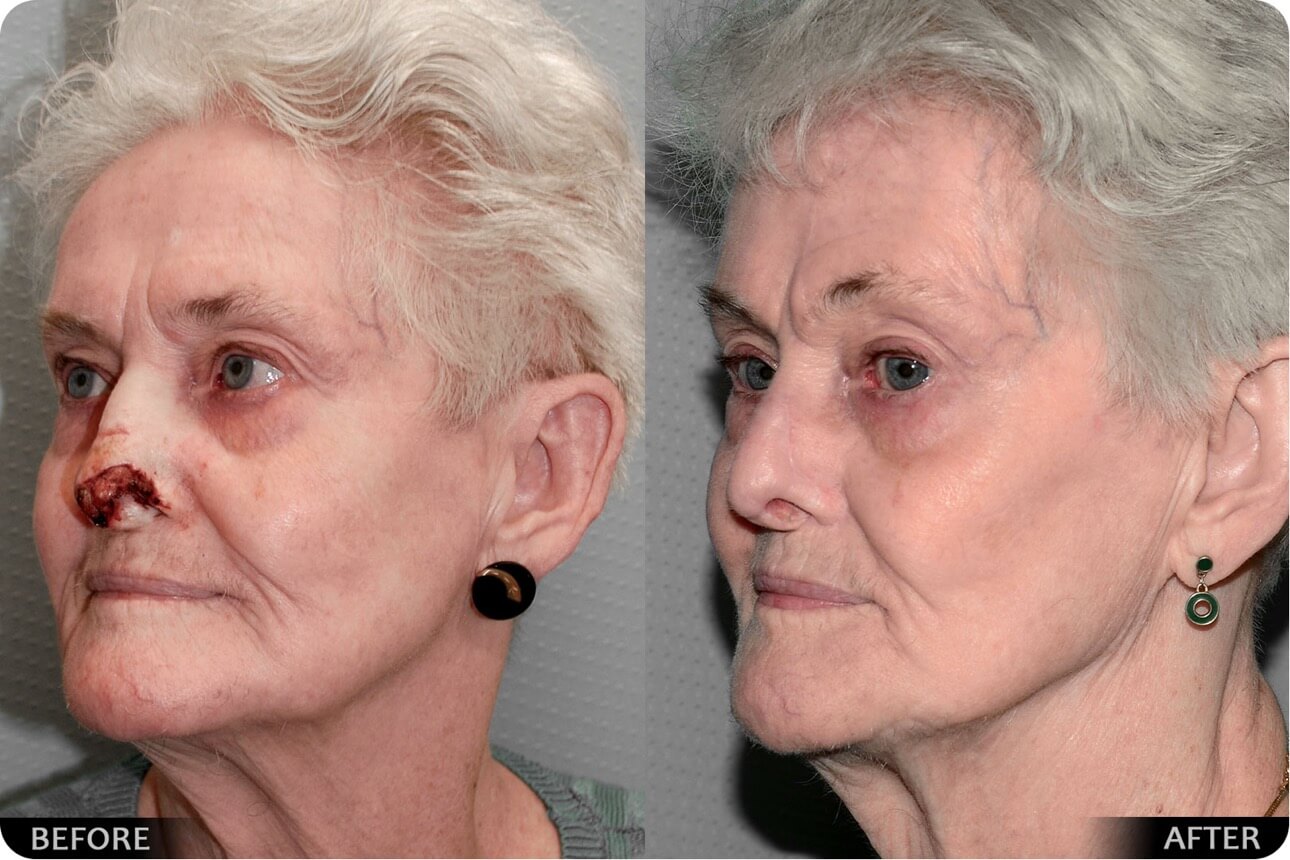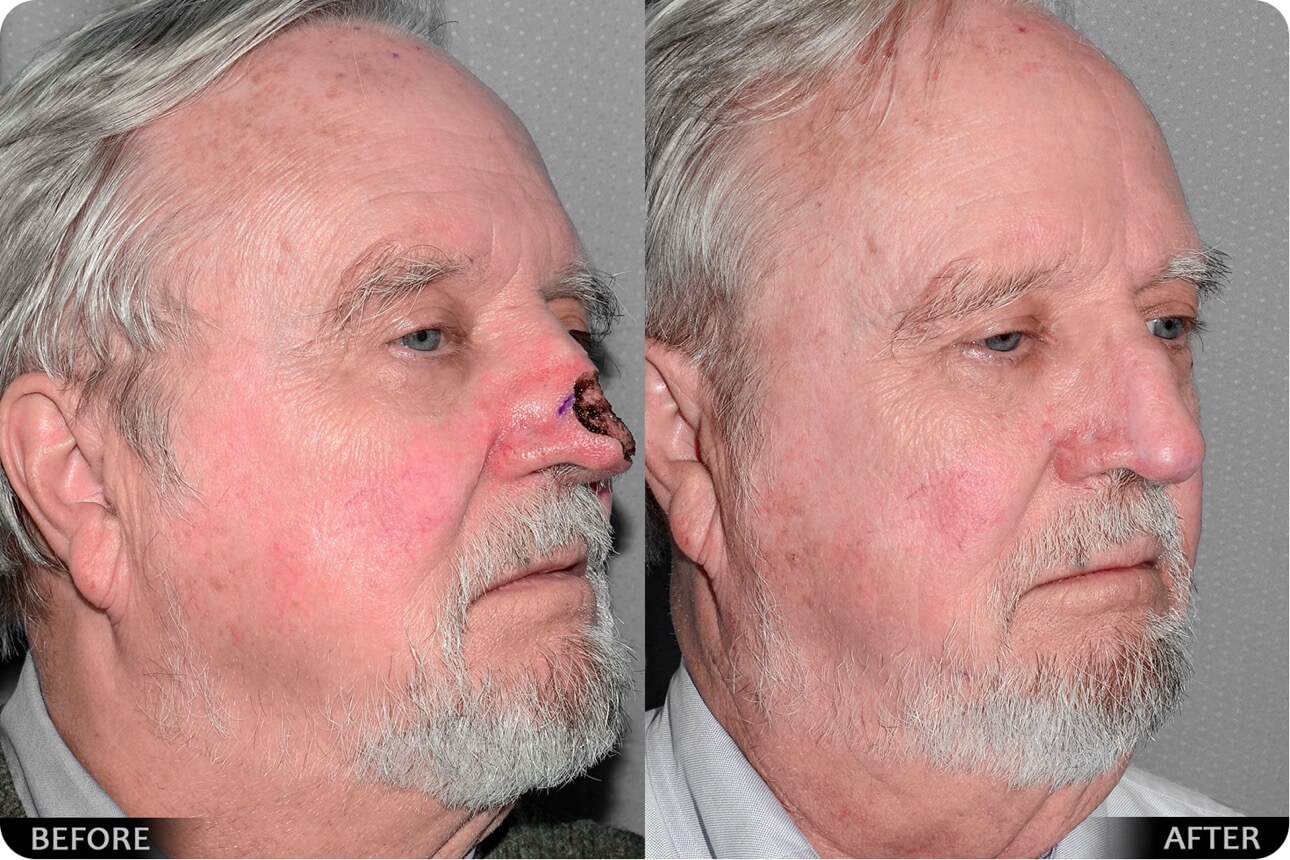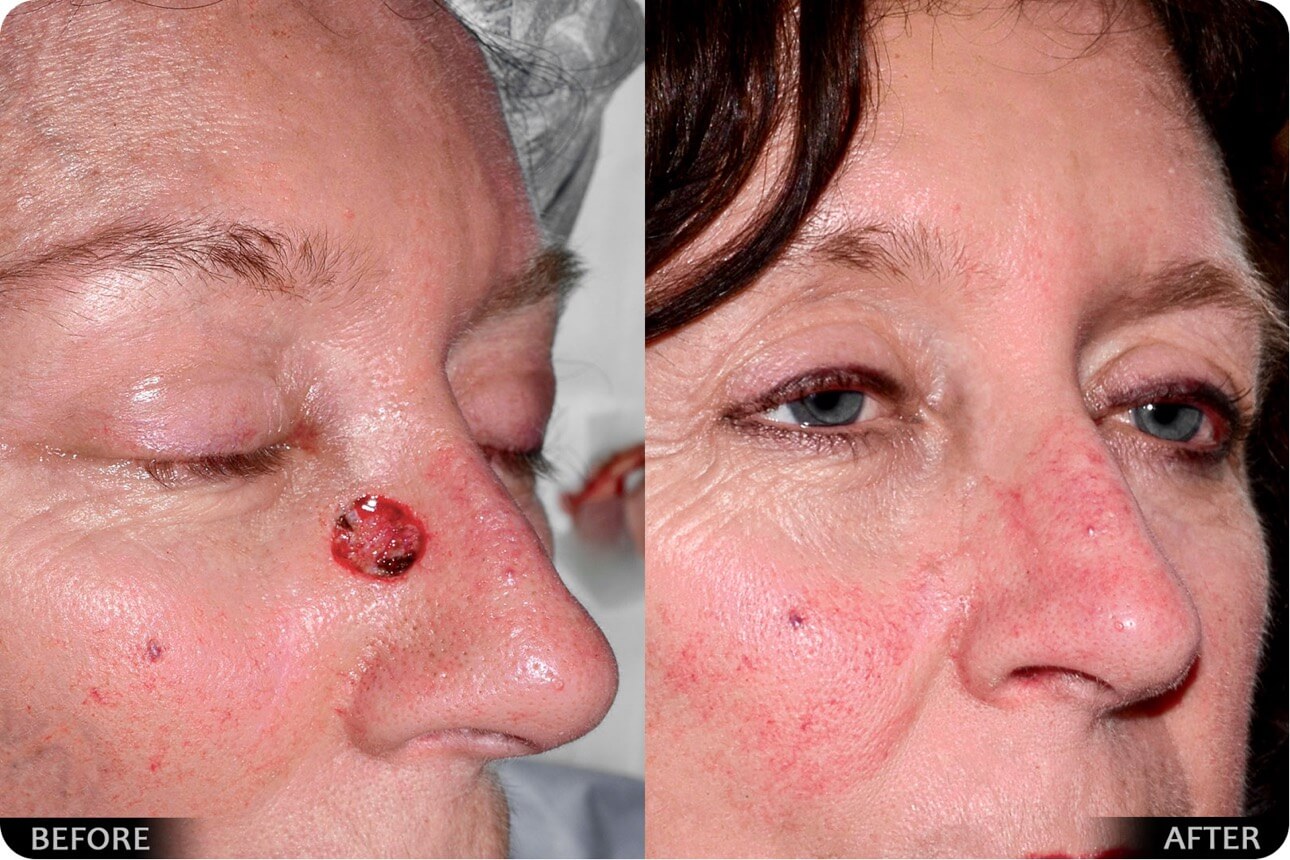Dr. Steinbacher is passionate about helping children and adults with various medical cosmetic issues. He brings dedication, diligence, and artistry to the treatment of these patients, emphasizing natural, aesthetic, and functional results with the fewest facial surgery possible.
Cleft Lip and Palate
Cleft lip and palate is one of the most common birth “abnormalities” (ranging 1/500-1/800 births). This condition occurs when developing facial “blocks” of tissue fail to fully connect and fuse, thereby leaving a “Cleft” or slit of the lip, nose, upper jaw, and palate. At times a cleft lip can occur alone; a cleft palate can occur alone, or any combination of cleft lip (complete, incomplete) and cleft palate (soft and/or hard) can present. Additionally, the clefts can be on one or both sides.
With cleft lip repair and cleft palate repair, we can properly restore the lip, mouth, oral, palatal function as well as provide a normal, pleasing physical appearance. Specialized and highly individualized techniques can help enhance a person’s ability to talk, eat, and even breathe. Cleft lip and palate surgery can help restore normal speech, promote normal growth of the teeth and the upper jaw, and even enhance the development of both the auditory canal and Eustachian tube for normal hearing.
We have developed several techniques that have vastly improved the cosmetic and functional results in infants, children, and adults with cleft lip and palate. After surgery, there will be specific home care instructions that you need to follow, depending on the type and extent of procedure performed. You will need to protect the surgical site when eating, and there will be certain dietary and feeding considerations we will address. We will see you on consult prior to delivery – on recognition with prenatal ultrasound that a cleft lip or palate is suspected; the first few weeks of life, or anytime during infancy, childhood, and adulthood – to discuss the options for functional and aesthetic improvement relating to your / your child’s cleft lip and palate.
Click here to see the extended photo gallery.
Isolated Craniosynostosis (non-syndromic)
Another condition seen at or shortly after birth is “craniosynostosis” or skull suture fusion. Normally, there are fibrous or stretchy connections between the multiple plates of bone comprising the skull. These are present and stretchy to enable the skull to expand and round out, secondary to normal brain growth. In some cases, one of these “sutures” (or seams, stretchy connections) fuses too early. In such cases the skull is not able to expand properly and the headshape takes on an abnormal or unusal appearance. The midline suture fusion can lead to a triangular forehead (metopic synostosis with trigonocephaly), or an oblong, oval or football shaped head (sagittal synostosis or scaphocephaly). A unilateral suture can also fuse (unilateral coronal synostosis, unicoronal, or UCS, leading to anterior synostosic plagiocephaly) or unilateral lambdoid craniosynostosis. In isolated non-syndromic craniosynostosis usually only a single suture is fused / involved. Fusion will impart a progressively altered, abnormal headshape, and can put pressure on the brain. As a result these infants require surgical intervention to release the fused suture, normalize the headshape, and benefit future neurocognitive / intellectual development. This is a team effort with craniofacial plastic surgery and pediatric neurosurgery. Craniosynostosis must be distinguished from positional plagiocephaly – which does not require surgery, but occasionally a molding helmet may be pursued.
Give the gift of confidence.
Whether you need to address congenital anomalies such as cleft lip or palate or correct features after a trauma, we can use our skill to provide naturally beautiful results.
Talk to us about a medical cosmetic procedure today.
Crouzon / Apert / Pfieffer related craniosynostosis and facial dysostosis (Syndromic, FGFR, TWIST)
In some cases a genetic finding in the skull suture can lead to early skull fusion at more than one suture (multi-suture) – affecting the skull and the face. The restricted skull cavity can place pressure on the developing brain, leading to visual problems and learning difficulties if not corrected. The headshape appears abnormal, and will look even more abnormal with time, if not corrected. There are several options to open the fused sutures, endoscopically and open, with cranioplasty repositioning, posterior cranial vault distraction, and various sequence or stages, depending on the case, findings, and individual child. This is a team approach with pediatric neurosurgery and craniofacial plastics.
The facial bones, orbits, nose (and other areas) may also be affected in cases of syndromic craniosynostosis. These conditions can run in families (inherited), or can occur for the first time (sporadically). Dr. Steinbacher has written several papers, and produced videos looking into the optimal treatment, and technical aspects of craniosynostosis treatment.
Crouzon and Apert syndromes are associated with other facial changes including reduced facial projection and growth, prominent eyes, breathing difficulties, obstructive sleep apnea, airway obstruction, and dental and occlusal problems with speech and chewing/biting difficulties. Hands and fingers and other body systems may be affected as well. On the other hand, Apert syndrome is characterized by syndactyly (fusion or webbing of the fingers or toes).
Before And After Results Videos

The same artistic and meticulous attention Dr. Steinbacher places on jaw surgery and rhinoplasty for cosmetic and functional reasons is used in the pediatric and adult craniofacial, and craniosynostosis patient as well. We have a fully comprehensive team care system in place. Each member is a specialist in their own areas of expertise, making sure that you’re always in good hands.
Click here to see the extended photo gallery.
Nasal and Facial Reconstruction following skin cancer and trauma
In cases where skin cancer removal leads to a defect of the nose or face, Dr. Steinbacher uses tissue reconstructive techniques, with aesthetic principles to restore the normal nasal and facial appearance (form and function). Tissue and be geometrically repositioned to hide the fact that any skin cancer, trauma, or defect ever existed. Local facial flaps, including from the forehead, cheeks, and other areas, can be used to seamlessly reconstruct and recreate facial and nasal anatomy. In some cases, a staged approach is needed, where a second procedure “divides” the source of the tissue flap. Dr. Steinbacher will discuss the various options, pros, cons, risks and benefits at your consultation. He works in collaboration with a number of dermatologists, MOHs surgeons, and other providers who have removed the skin cancer. Dr. Steinbacher then will assess the defect or missing tissue and structures, and come up with the optimal plan for your reconstruction. His aesthetic and artistic eye is critical in these procedures.
Click here to see the extended photo gallery.
Regardless of your medical condition, Dr. Steinbacher’s extensive background and surgical experience permit him to comprehensively understand and effectively treat any pediatric or adult skull, facial, nasal, jaw, cleft lip, palate and alveolus, jaws, nose, and soft and hard tissue problem with the utmost care.

Dr. Derek Steinbacher has devoted his life to aesthetic and life-changing surgery. He is an artistic and meticulous surgeon who draws patients from around the world due to his perspective, unmatched skill, and exceptional results. He is able to uniquely address the face (facelift + rejuvenation), jawline (orthognathic; chin; contouring; implants), nasal (rhinoplasty), eyelids, profile, neck, breast, and body with one-of-a-kind results.
He is a multiple Board-Certified, Fellowship-Trained Plastic, Cosmetic, and Cranio-Maxillofacial Surgeon. He is Fellow of the most prestigious surgical organizations, including the Society of Plastic Surgeons, the American College of Surgeons, the Royal College of Surgeons of Edinburgh, the Academy of Facial Plastic Surgery, Societies of Craniofacial and Maxillofacial Surgery, the Aesthetic Society, and the Rhinoplasty Society. He has served as Full-Professor of Plastic Surgery at Yale, including Director of the Cleft and Craniofacial Program, and Chief of Oral and Maxillofacial Surgery. Dr. Steinbacher has unparalleled training at premier institutions, including Harvard and Johns Hopkins. His perspective brings together the best aspects of many distinct – but related fields – and it is this intersection of scope and expertise, in addition to an artistic eye, which enables excellent comprehensive results.
Dr. Steinbacher's approach: technical acumen, meticulousness, and penchant for combining art and science, together with his eye for balance, beauty, and harmony, helps achieve outcomes that greatly improve a person's confidence, health, and overall quality of life. Patients can trust that they are always in good hands!


